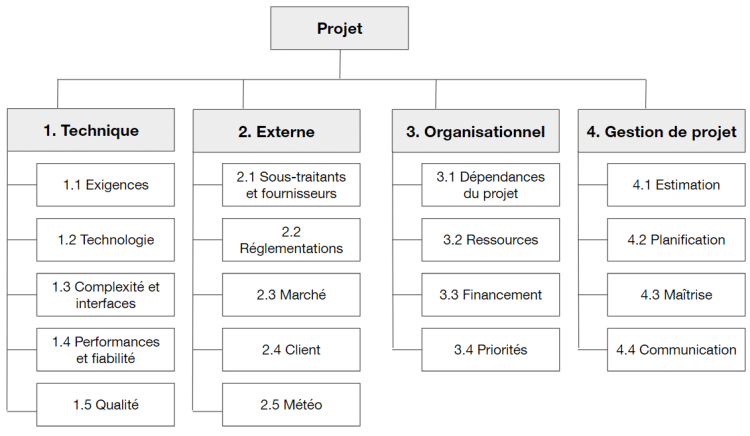Senior Project Manager
Stress less about project risks
Senior Project Manager
Our team went to the last PMP Symposium in Montreal. Here is what caught their attention the most. What do you know about risk management?
2018 is definitely shaping up to be an intense year for Adviso’s project management team. In addition to major growth, an end-of-summer move and a number of major clients projects on the go, the team is continuing its perpetual quest to explore and exploit industry best practices. To that end, some of us had the chance to attend the PMI Montreal Symposium at Plaza Centre Ville at the end of April. Organized by the Project Management Institute of Montreal, it’s the biggest event of the year for professionals in the field. The non-profit’s goal is to promote project management and encourage the development of the profession in Quebec.
Since I launched a sustainable development mobile app two years ago, the Symposium session that interested me the most was one on humanitarian aid projects and their unique contexts. It’s a theme that’s been particularly important to me, as I’ve often made the link between humanitarian disasters and ecological crises.
Francois Audet, Director of the Montreal Institute of International Studies and a professor of international humanitarian aid and project management, presented on some unique project management challenges where the theoretical rules don’t always apply. Here are a few key takeaways from his presentation on risk management, and how to concretely apply them to your projects.
Where do you start?
In a few words, risk management is a process that allows us to identify, quantify, analyze and respond to a project’s risks. Very simply put, the goal is to maximize the likelihood of a positive outcome and minimize the chances of encountering obstacles to achieving your objectives. It’s an extremely important element that’s often minimized at the outset of a project.
When you look at a project as a whole, though, risk is mentioned throughout:
- In the constraints (scope, quality, time, cost, resources)
- In the planning and integration phase
- In the monitoring and follow-up phase
- In cost management
- In communication management
Let’s look at a concrete example before we go any further.
A concrete case
Here’s an example of a real-life project management situation: we had a timeline of only four weeks, resources on a steep learning curve and an overly broad project scope. All this in addition to a client in a digital learning curve, and a strong emotional attachment to the project.
Faced with tight time constraints and despite our initial hesitation, we agreed to deliver the project within the timeline, without assessing the risks.
Results:
- Frustration from the team
- A misunderstanding on the client-side regarding their initial idea
- More than double the allocated hours were spent
- Lessons were learned as a team
What we have learned:
- From the very first conversations with the client, the team should have been thinking about listing the risks and a plan B for each situation.
- After further discussion with the client, more experienced resources should have been assigned to the project.
- To avoid misunderstandings with the client, especially given their low knowledge of the industry, an example of the final deliverable should have been sent, so that expectations could have been better managed.
Want to avoid risk? Be proactive!
Risks can change, evolve, appear or disappear throughout the lifespan of a project. By adopting the below-listed practices at the outset of each project, you’ll be better equipped to manage any surprises or delays, and get a higher success rate.
A project is a problem scheduled for solution’
James P. Lewis PhD, Fundamentals of Project Management, 3rd edition
a) Document
No matter what the project is, clear documentation is essential to avoid roadblocks. This documentation takes the form of a risk management plan including all the items below.
Let’s start with methodology, or the approach you’re going to take. Ask yourself these questions: what tools and data will you use?
b) Assign roles and responsibilities
Next, define your team members’ roles and responsibilities for every type of activity. Though it’s true that some risks are hard to anticipate, the idea is to think about it as a team: what are the things that could prevent you from reaching your goals?
Start by listing the risks in the left column of a table, then fill in the right column with the things you can do to anticipate or resolve these issues. On this side of the table, ask yourself these questions: what could we do in this situation? Who would we be doing it for? In the end, you’ll come out with a plan B for every situation, as A TEAM (this type of meeting is perfect for people who are very analytical or who tend to be very negative 😉).
While you’re at it, group risks together by type of cause (Risk Breakdown Structure), like internal, external, organizational, technical, managerial, political, etc.
Here’s a table to illustrate:

c) Budget
The budget aspect is also critical. To avoid surprises, try estimating how much is would cost to offset the negative impacts of the risks you’ve identified. One piece of advice: keep 10 to 15 per cent of the total budget as a buffer. Don’t spend it all right away!
d) Plan
Still on the topic of documentation, the timeline, a compulsory step for every project manager, will help you identify when your risk analyses need to be done, and when a plan of action needs to be put in place.
Watch out; for these documents to be valuable they need to be CONSISTENT and CONTROLLED. It’s important that they be updated regularly as the project advances so you can keep your risk-response readiness current.
Things don’t always go as expected
It can be hard to apply a unique solution when faced with the variety of situations you might encounter, particularly in unstable situations.
Whether it’s an agency issue or a situation from everyday life, you can’t always plan for everything. Even in extreme situations of humanitarian disaster, the same questions come back time and time again: how can we overcome the obstacles that prevent us from advancing? How can we anticipate crises rather than put our fires? On whose behalf should we be acting?
These unforeseeable situations remind us that whatever the circumstances, we need to take time beforehand to try to think of a plan B.
When it comes to project management in an agency, every mandate has its risks. The goal is to be able to anticipate them as much as possible.
Scope changes most often occur because something is forgotten. Better attention to what is being done in the beginning usually reduces scope creep
James P. Lewis PhD, author of Fundamentals of Project Management, third edition
Want to push your risk management skills even further?
This article is a starting point to help you get organized to better manage risk.
What about you, what are your good risk management habits? How will the theories we looked at here help you in a time of crisis?
To take the analysis even farther, you could easily deepen the methodology and reflections. Notably the qualitative and quantitative analysis of risk. We’re talking here about the company’s environmental factors, organizational assets, a matrix of probability, cost management plan, etc.
As a project coordinator in an agency, my goal is to support client in their success. Do you think this would pass a risk projection model? In other words I have to be able, at the beginning of a project, to anticipate future risk based on trends in past data.
And I’ll leave you on that note… Happy planning!

.jpg)





